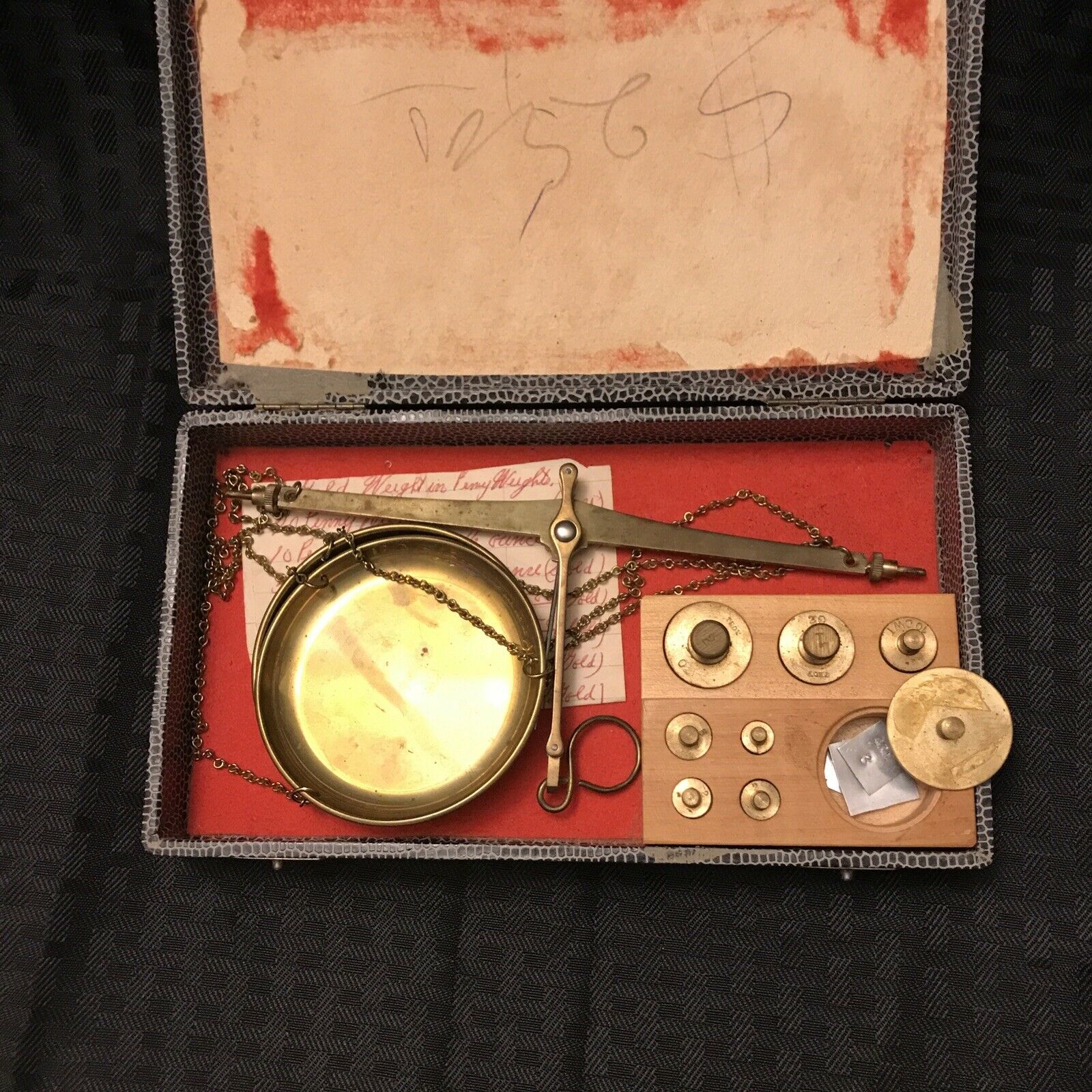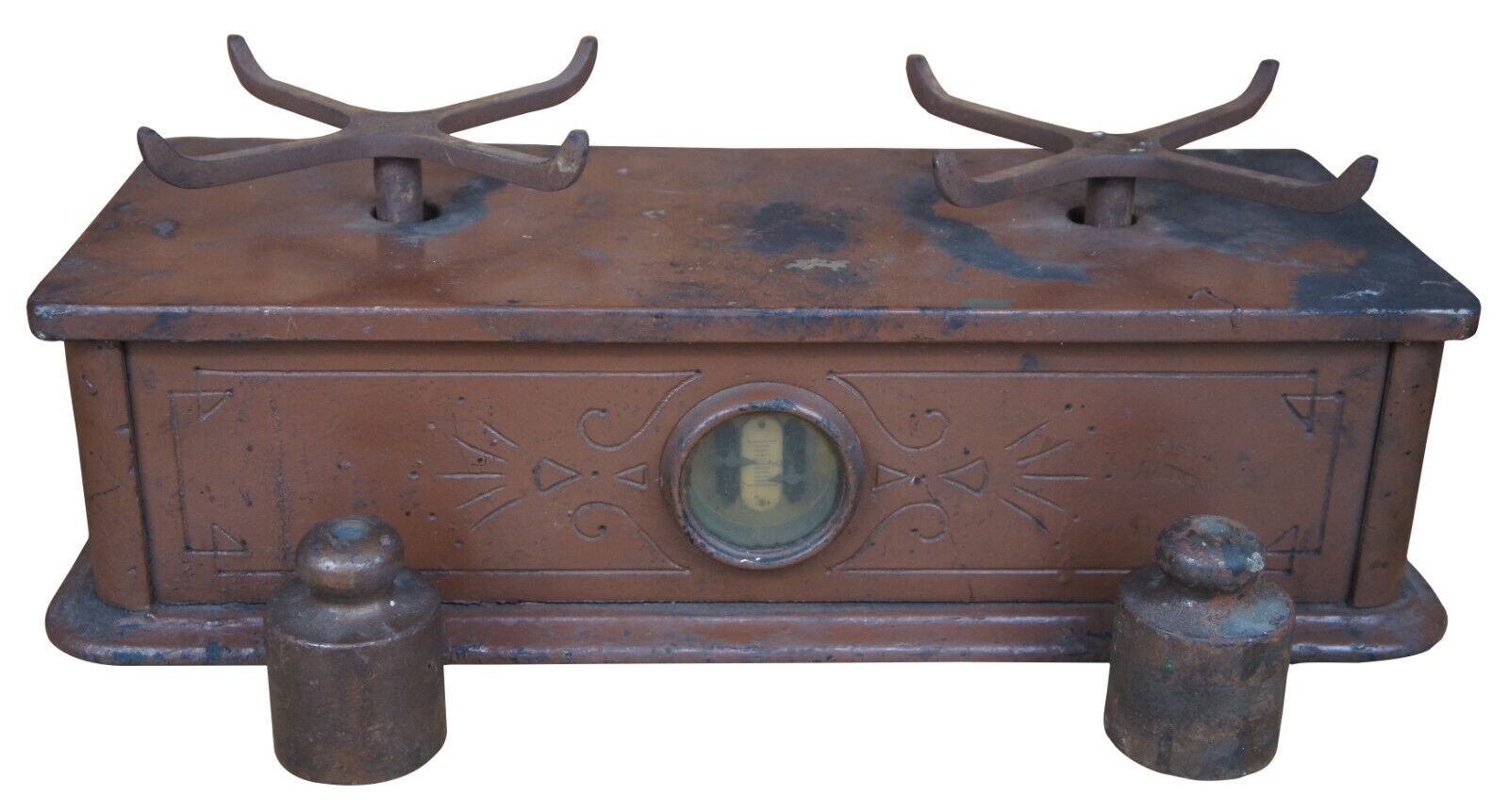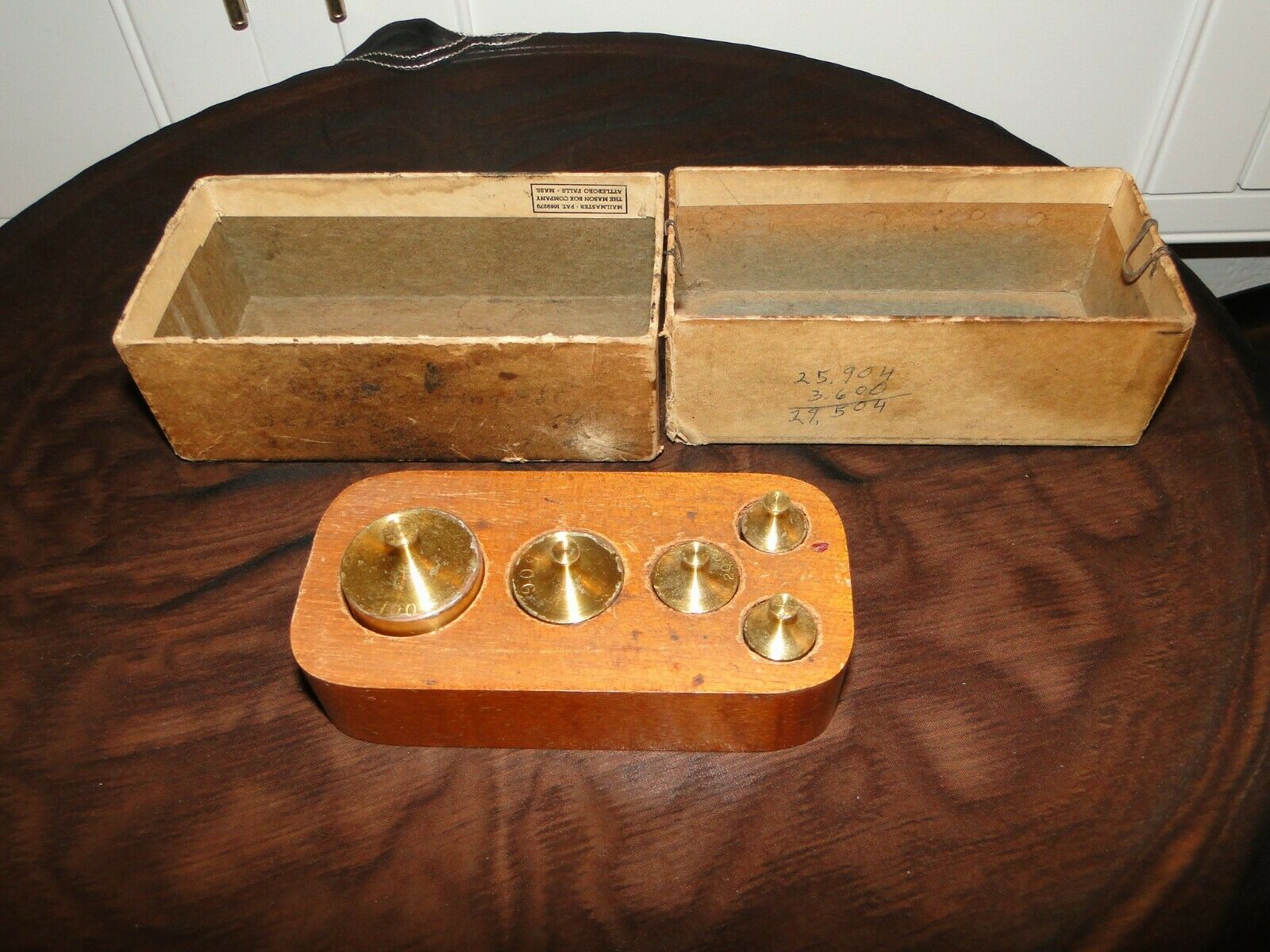-40%
Pocket Chas. Kohlbusch Precision Pocket Trade Scale Wood Case 1800S Nice
$ 92.6
- Description
- Size Guide
Description
UP FOR BIDS OR OFFERS ARE THESE AMAZING POCKET GOLD/GEMS SCALESVERY RARE AND COLLECTIBLE BELOW IS SOME INTERESTING FACTS ABOUT THE COMPANY / MAKER AND AGE OF THIS WONDERFUL PIECE SEE PICTURES ASK ANY AND ALL ?s YOU MAY HAVE SEE ALL SHIPPING OPTIONS AND MAKE SURE TO CHECK OUT ALL ARE OTHER UNIQUE AND INTERESTING AND SOMETIMES ODD FINDS , CANT WAIT TO BID AND WANT IT NOW SHOOT ME AN OFFER I CANT REFUSE ALSO SEE ALL PICTURES AS THEY ARE PART OF THE DISCRIPTION AND SHOW EXACTLY WHAT YOU ARE GETTING HAPPY HUNTING
Pocket assay scale, complete with gram weights, marked Chas. Kohlbusch, Jersey City, NJ, walnut case (The story of the Herman Kohlbusch Balance Company is an interesting testimonial to the success of an early balance manufacturing firm. C. Herman Kohlbusch Sr. and his wife emigrated to the U.S. from Saxony, Germany in 1851 when he was 29 years of age. He established the Herman Kohlbusch Balance Company in 1859 after apparently serving an apprenticeship with balance maker Becker & Sons in New Rochelle, New York. The New York Business Directory first lists his name as a balance manufacturer in 1884-85. The earliest American balance company catalog that has been found is an 1888 catalog issued by Herman Kohlbusch, Sr. in which he offers 2 models of enclosed assay balances, a small boxed portable assay scale and a pocket assay scale as shown here. Of particular interest is the pocket assay scale. This little pocket scale is seen in literally all the scientific supply catalogs from 1888 to as late as 1943 making it a unique and distinctive Kohlbusch product for over 50 years. The 1888 catalog lists it as either a pocket assay scale, pocket diamond scale or pocket surgeon's scale with the accompanying weights being the only possible way to identify which is which. Carat weights were included with the diamond scale while gram or assay ton weights were used with the assay scale. The surgeon's scale included either grains, drams or scruples weights. Herman Sr.'s eldest son Charles was listed as involved with the firm until 1892 and son Herman Jr. continued with the firm until his death in 1904, just weeks after Herman Sr.'s death in 1903. Since this assay scale is marked Charles Kohlbusch with the Jersey City address on both the scale inside top and the metal scale arm, it is presumed that the scale's manufacture date is sometime prior to 1892 and Charles' departure from the business. Charles' eldest son Edgar continued as a manufacturer of scales and weights as late as 1920 under the firm name of Herman Kohlbusch, Sr. Sometime in the mid 1920s, the firm's name was changed to Seederer-Kohlbusch with the logo SEKO, Inc. Continuing in business as SEKO, the Seederer-Kohlbusch, Inc. company was purchased by Lectra Service of Englewood, NJ in 1978. See Shannon, The Assay Balance, pp 56-88)


















